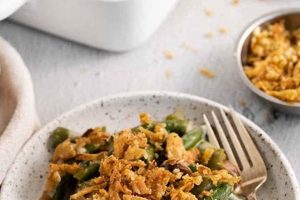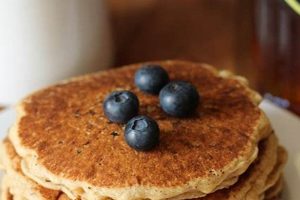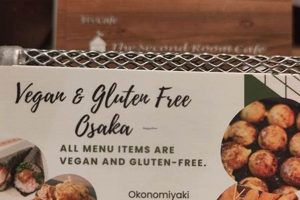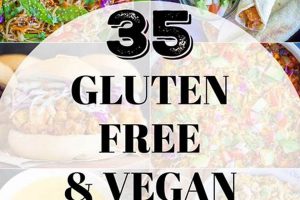This baked confection is characterized by the absence of both animal-derived ingredients and gluten, a protein composite found in wheat, barley, and rye. As an example, a typical formulation utilizes a combination of rice flour, tapioca starch, and potato starch to replace wheat flour, while plant-based milk and oil substitute for dairy and eggs, respectively.
This type of dessert addresses dietary restrictions and preferences related to both veganism and gluten intolerance. It allows individuals adhering to these guidelines to enjoy a treat similar to traditional cupcakes without compromising their dietary choices. The emergence of such specialized baked goods reflects growing awareness and accommodation of diverse dietary needs in the food industry.
The following sections will delve into specific aspects of creating these desserts, including ingredient selection, baking techniques, and common challenges encountered during the development process.
Essential Considerations for Formulation
Achieving optimal texture and flavor requires careful attention to ingredient selection and baking methodology. The following points provide guidance for successful preparation.
Tip 1: Flour Blend Optimization: A combination of gluten-free flours, such as rice flour, tapioca starch, and almond flour, often yields superior results compared to single-flour recipes. Experimentation with ratios is crucial to achieve the desired crumb structure.
Tip 2: Binding Agent Selection: Due to the absence of gluten, a binding agent is necessary. Flaxseed meal or chia seed gel can effectively bind ingredients and add moisture. Hydrate these ingredients appropriately before incorporation.
Tip 3: Leavening Agent Precision: Accurate measurement of baking powder and baking soda is paramount. Too little can result in a dense product, while excessive amounts can cause undesirable flavors and textures.
Tip 4: Moisture Management: Gluten-free flours tend to absorb more liquid than wheat flour. Ensure adequate hydration by incorporating ingredients such as applesauce, mashed banana, or vegetable oil to maintain moisture content.
Tip 5: Sugar Alternatives: While refined sugar is commonly used, consider alternatives such as maple syrup, agave nectar, or coconut sugar to enhance flavor profiles and potentially reduce glycemic impact. Adjust liquid ratios accordingly.
Tip 6: Xanthan Gum Usage: Xanthan gum can mimic the binding properties of gluten, improving texture and preventing excessive crumbling. Use sparingly, as overuse can result in a gummy consistency.
Tip 7: Controlled Baking Temperature: Monitor oven temperature accurately to prevent under-baking or over-browning. Lower temperatures may be necessary compared to conventional recipes.
By adhering to these guidelines, one can increase the likelihood of producing high-quality products that meet both dietary requirements and culinary expectations. Precise execution and careful ingredient selection are essential.
These considerations form the foundation for the development process, which can then be further refined through experimentation and adjustments based on specific desired outcomes.
1. Ingredient Substitutions
The creation of a baked dessert that is both vegan and gluten-free hinges critically on effective ingredient substitutions. Traditional recipes rely on gluten in wheat flour for structure and eggs and dairy for binding, leavening, and moisture. Therefore, substituting these elements requires a nuanced approach to replicate their individual functions within the recipe. For example, replacing wheat flour often necessitates a blend of gluten-free flours like rice flour, tapioca starch, and potato starch. Each flour contributes a unique textural element, and their combination aims to mimic the structural properties of gluten. Similarly, aquafaba, the liquid from canned chickpeas, can serve as an egg replacement, providing binding and aeration due to its protein content.
The choice of substitute ingredients directly impacts the final product’s texture, flavor, and overall success. The use of flaxseed meal or chia seed gel provides binding and moisture, while also introducing a subtle nutty flavor. Plant-based milks such as almond or soy milk replace dairy, offering varying degrees of richness and fat content. Understanding the specific roles of traditional ingredients and carefully selecting substitutes that mirror those functions is paramount. In practice, a poorly chosen flour blend can result in a crumbly or gummy texture, while an inadequate egg replacement may lead to a dense and flat cupcake.
In summary, ingredient substitutions are not merely replacements but rather deliberate choices that fundamentally determine the characteristics of the dessert. Successful execution requires knowledge of the functional properties of various ingredients and their interactions within the recipe. The goal is to achieve a balance that allows the dessert to maintain structural integrity, appealing flavor, and a pleasant texture, all while adhering to vegan and gluten-free dietary guidelines.
2. Texture Optimization
Achieving a desirable texture in a vegan and gluten-free baked confection presents a unique challenge due to the absence of gluten, which provides elasticity and structure, and eggs/dairy, which contribute to binding and moisture. Optimizing texture requires careful manipulation of ingredients and baking techniques to replicate the qualities of traditional recipes.
- Flour Selection and Blending
Different gluten-free flours possess distinct properties. Rice flour can provide a neutral base, while tapioca starch contributes to chewiness, and almond flour adds moisture and fat. Blending these flours in specific ratios is critical to achieving the desired crumb structure. An imbalanced blend can result in a dry, crumbly, or gummy end product.
- Hydration Levels and Moisture Retention
Gluten-free flours absorb moisture differently than wheat flour. Maintaining adequate hydration is essential to prevent a dry texture. Incorporating ingredients such as applesauce, vegetable oil, or plant-based yogurt can improve moisture retention. However, excessive moisture can lead to a dense or soggy texture, necessitating careful balancing.
- Binding Agents and Structure Formation
In the absence of gluten, binding agents are needed to hold the ingredients together and provide structure. Flaxseed meal, chia seed gel, or psyllium husk powder can effectively mimic the binding properties of gluten. These agents create a network that prevents the dessert from crumbling. The quantity of binding agent used directly influences the overall texture, requiring precise measurement.
- Baking Time and Temperature Control
Optimizing baking time and temperature is crucial for texture development. Overbaking can result in a dry and hard product, while underbaking can lead to a gummy or undercooked interior. Lower baking temperatures may be necessary compared to traditional recipes to allow the inside to cook thoroughly without excessive browning of the exterior. Careful monitoring of the baking process is required.
The successful creation of a vegan and gluten-free baked good with an appealing texture hinges on the interplay of these factors. Precise control over flour blends, hydration, binding agents, and baking parameters is essential to replicate the structural and sensory qualities of conventional desserts. A thorough understanding of these elements facilitates the production of a high-quality, palatable product suitable for consumers with specific dietary needs.
3. Flavor Balancing
The pursuit of palatability in a vegan and gluten-free baked dessert necessitates a meticulous approach to flavor balancing. In the absence of traditional ingredients such as butter, eggs, and wheat flour, which contribute significantly to both flavor and texture, alternative components must be strategically employed to achieve a harmonious taste profile. The selection of plant-based milks, for instance, directly impacts flavor; coconut milk imparts a distinct sweetness and tropical note, while almond milk offers a milder, nuttier undertone. Similarly, sweeteners such as maple syrup, agave nectar, or coconut sugar introduce varying degrees of sweetness and subtle flavor nuances that must be carefully considered in relation to other ingredients.
The interplay between these alternative ingredients and the overall flavor profile is critical. The addition of spices like cinnamon, nutmeg, or cardamom can enhance the perceived sweetness and add complexity, masking any potential off-flavors from certain gluten-free flours or plant-based substitutes. Citrus zest or extracts can introduce brightness and acidity, balancing the richness of the dessert. For example, a recipe using rice flour, which can be somewhat bland, might benefit from the addition of almond extract and lemon zest to create a more complex and appealing flavor. Chocolate or cocoa powder can provide depth and richness, effectively masking any undesirable taste notes arising from the gluten-free flour blend. Ultimately, successful flavor balancing requires a comprehensive understanding of how different ingredients interact with each other to create a unified and pleasing sensory experience.
Achieving optimal flavor balance presents a significant challenge in vegan and gluten-free baking, demanding careful ingredient selection and meticulous attention to detail. The absence of traditional flavor contributors necessitates a strategic approach to flavor design, leveraging the unique properties of alternative ingredients to create a well-rounded and satisfying dessert. The strategic combination of spices, extracts, and alternative sweeteners can effectively mask potential off-flavors and enhance the overall palatability of the final product. Thus, skillful flavor balancing is not merely an aesthetic consideration but an essential component for ensuring consumer acceptance and satisfaction.
4. Dietary compliance
Dietary compliance, in the context of a confection free of animal products and gluten, signifies adherence to specific ingredient restrictions dictated by both vegan and gluten-free dietary guidelines. Non-compliance introduces potential health risks for individuals with celiac disease or gluten sensitivity and violates the ethical tenets of veganism. A confection incorrectly labeled might contain trace amounts of gluten, posing a health risk to those with celiac disease. This demonstrates a direct cause-and-effect relationship between adherence and well-being.
Compliance is of paramount importance. The integrity of the product’s labeling is essential. Consider, for example, the widespread use of shared baking facilities. Cross-contamination can occur if strict protocols are not in place to segregate gluten-containing and gluten-free ingredients. Likewise, ingredients must be meticulously sourced to ensure they are free from animal-derived components. A failure to verify the vegan status of seemingly innocuous additives can lead to unintentional consumption of animal products, undermining the core principles of a vegan lifestyle. Therefore, rigorous sourcing and production processes are essential components of ensuring full dietary compliance.
In conclusion, the creation and marketing of a specialized cupcake necessitates scrupulous attention to ingredient sourcing, manufacturing processes, and accurate labeling. The practical significance of this understanding lies in safeguarding the health of consumers with dietary restrictions and upholding the ethical standards associated with veganism. The challenges associated with ensuring full adherence underscore the need for transparency and accountability within the specialized food industry.
5. Market Demand
Increased consumer awareness of dietary restrictions and ethical consumption has fueled substantial market demand for products catering to specific needs, creating a notable opportunity for vegan and gluten-free baked goods. This demand stems from individuals with celiac disease, gluten intolerance, or wheat allergies seeking safe alternatives to traditional baked items, as well as from vegans desiring desserts that align with their ethical values. The effect is a growing segment of the population actively searching for and purchasing these specialized items, impacting the food industry’s product development and marketing strategies.
This demand underscores the importance of offering viable dessert options that accommodate both vegan and gluten-free requirements. As a result, bakeries and food manufacturers have responded by developing and marketing specialized products, including the aforementioned cupcake, to capture this growing market share. For instance, the proliferation of gluten-free sections in grocery stores and the increasing availability of vegan options in restaurants reflect a broad industry adaptation to consumer demand. The practical significance of understanding this demand lies in recognizing the potential for business growth and the need for innovation in ingredient sourcing, recipe development, and production processes to meet the evolving needs of health-conscious and ethically-minded consumers.
The market demand for items of this nature reflects a broader societal shift towards inclusive and health-conscious food choices. Challenges remain in ensuring product quality, affordability, and widespread accessibility, but the trend suggests continued growth and innovation within this specialized segment of the food industry. The focus on specific dietary requirements presents opportunities for targeted marketing and product differentiation, enabling producers to connect with distinct consumer groups and build brand loyalty based on trust and commitment to dietary needs.
Frequently Asked Questions
This section addresses common inquiries and misconceptions surrounding baked desserts formulated without animal products or gluten.
Question 1: Are vegan gluten-free cupcakes inherently healthier than traditional cupcakes?
The nutritional profile varies depending on ingredients. While free from animal products and gluten, these confections may still contain significant amounts of sugar and fat. Careful attention to the ingredient list is advised.
Question 2: Do all gluten-free flours produce the same results in vegan baking?
No. Different gluten-free flours possess distinct properties. Rice flour, tapioca starch, and almond flour, for example, contribute unique textures. Blending these flours often yields superior results compared to single-flour recipes.
Question 3: Can vegan gluten-free cupcakes be made without any refined sugar?
Yes. Alternatives such as maple syrup, agave nectar, or coconut sugar can replace refined sugar. However, adjustments to liquid ratios may be necessary.
Question 4: What is the role of xanthan gum in a vegan gluten-free cupcake recipe?
Xanthan gum mimics the binding properties of gluten, improving texture and preventing excessive crumbling. Use sparingly, as overuse can result in a gummy consistency.
Question 5: Are all commercially available vegan frosting options gluten-free?
Not necessarily. Verification of the ingredient list is essential. Some vegan frostings may contain wheat-based ingredients or be produced in facilities that also handle gluten.
Question 6: How should vegan gluten-free cupcakes be stored to maintain optimal freshness?
Store in an airtight container at room temperature for up to two days, or in the refrigerator for up to five days. Freezing is also an option for longer storage. Allow to thaw completely before serving.
In summary, crafting high-quality desserts that adhere to both vegan and gluten-free standards necessitates careful ingredient selection, precise execution, and a thorough understanding of the unique properties of alternative ingredients.
The subsequent section will provide specific recipes and detailed instructions for preparing these specialized baked items.
Conclusion
The creation of a palatable and structurally sound confection without animal products or gluten represents a complex undertaking. This exploration has examined the essential considerations of ingredient substitution, texture optimization, flavor balancing, dietary compliance, and market demand influencing its development. Success hinges on a thorough understanding of the functional properties of alternative ingredients and meticulous adherence to specialized baking techniques.
The demand for, and thus the importance of, the vegan gluten free cupcake lies in its ability to cater to a growing segment of the population with specific dietary needs and ethical preferences. Continued innovation in ingredient technology and baking methodologies will be essential to further refine the quality and accessibility of such specialized baked goods, ensuring they meet the evolving expectations of both consumers and the food industry. The pursuit of excellence in this area reflects a broader commitment to inclusivity and dietary awareness within the culinary landscape.


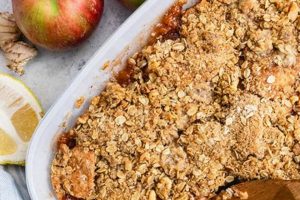
![Easy Vegan Gluten-Free Dinner Ideas [Recipes] Discover Delicious Vegan Food, Beauty Swaps, and Zero-Waste Tips for a Greener Life Easy Vegan Gluten-Free Dinner Ideas [Recipes] | Discover Delicious Vegan Food, Beauty Swaps, and Zero-Waste Tips for a Greener Life](https://thisvegangirl.com/wp-content/uploads/2025/11/th-858-300x200.jpg)
